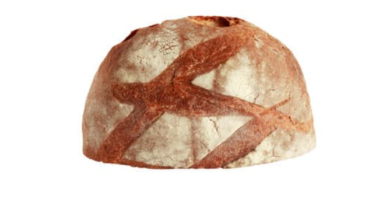How To Compare Fajita Vs Carne Asada: A Step-By-Step Guide
What To Know
- The grilled steak is then sliced into thin strips and served on a warm tortilla with an array of toppings such as grilled onions, bell peppers, and guacamole.
- While carne asada is typically served with tortillas and a simple side of salsa, it can also be used in a variety of dishes.
- However, if you prefer a more intense flavor, slightly chewy texture, and the versatility to use in a variety of dishes, carne asada is the clear winner.
In the realm of Mexican cuisine, two culinary titans stand tall: fajita and carne asada. Both dishes ignite taste buds with their tantalizing flavors and tender textures. However, despite their shared heritage, they possess distinct characteristics that set them apart. In this blog post, we embark on a culinary journey to explore the differences between fajita and carne asada, unraveling their unique charms and determining which one reigns supreme.
Origins and Preparation: A Tale of Two Traditions
Fajita: Fajitas, originating from the Spanish word “faja” meaning “strip,” are a Tex-Mex dish that gained popularity in the United States. They are typically made with skirt steak or flank steak, which is marinated in a blend of spices and grilled to perfection. The grilled steak is then sliced into thin strips and served on a warm tortilla with an array of toppings such as grilled onions, bell peppers, and guacamole.
Carne Asada: Carne asada, a staple of Mexican cuisine, translates to “grilled meat” and is typically made with flank steak, skirt steak, or rib-eye. The steak is marinated in a flavorful blend of citrus juices, spices, and herbs. Unlike fajitas, carne asada is grilled whole and then thinly sliced against the grain. It is often served with a side of warm tortillas, salsa, and a squeeze of lime.
Flavor Profiles: A Symphony of Tastes
Fajita: Fajitas are characterized by their bold and smoky flavor, thanks to the marinade and the char from the grill. The combination of grilled steak, onions, and peppers creates a harmonious blend of savory, sweet, and slightly spicy notes. The toppings add a layer of freshness and acidity, balancing the richness of the meat.
Carne Asada: Carne asada boasts a more intense and robust flavor. The citrus-based marinade infuses the steak with a tangy and juicy character. The grilling process caramelizes the exterior of the meat, creating a slightly crispy crust that contrasts with the tender interior. The lime juice adds a refreshing touch, enhancing the overall flavor profile.
Texture: A Matter of Tenderness
Fajita: Fajitas are known for their tender and juicy texture. The thin strips of steak are grilled quickly, allowing them to retain their natural juices. The addition of onions and peppers further enhances the tenderness, creating a melt-in-your-mouth experience.
Carne Asada: Carne asada is also tender, but it has a slightly more chewy texture due to the thicker cuts of steak used. However, the marinade and the slicing against the grain help to tenderize the meat, making it easy to bite through.
Versatility: A Culinary Canvas
Fajita: Fajitas are incredibly versatile, offering a wide range of customization options. The fillings can be tailored to personal preferences, allowing for endless flavor combinations. From grilled vegetables to cheese, salsa, and sour cream, the possibilities are limitless.
Carne Asada: While carne asada is typically served with tortillas and a simple side of salsa, it can also be used in a variety of dishes. It can be added to tacos, burritos, salads, and even soups, adding a burst of flavor to any meal.
Cultural Significance: A Reflection of Heritage
Fajita: Fajitas have become a symbol of Tex-Mex cuisine, representing the fusion of Mexican flavors with American culinary traditions. They are often served at casual gatherings and celebrations, bringing people together over a shared love of good food.
Carne Asada: Carne asada holds a significant place in Mexican culture, representing traditional grilling techniques and the importance of family and community. It is often the centerpiece of festive occasions, such as birthdays, weddings, and religious celebrations.
Which One Reigns Supreme?
The choice between fajita and carne asada ultimately depends on personal preferences. If you crave a bold, smoky flavor, tender texture, and endless customization options, fajita is the way to go. However, if you prefer a more intense flavor, slightly chewy texture, and the versatility to use in a variety of dishes, carne asada is the clear winner.
Beyond the Battle: Exploring Other Delights
While fajita and carne asada are the stars of the show, Mexican cuisine offers a vast array of other tantalizing dishes:
- Tacos: Corn or wheat tortillas filled with various meats, vegetables, and toppings
- Burritos: Large flour tortillas wrapped around a filling of beans, rice, meat, and vegetables
- Enchiladas: Corn tortillas filled with meat or cheese and covered in a chili sauce
- Quesadillas: Corn or wheat tortillas filled with cheese and other ingredients, then grilled or fried
- Tamales: Corn dough filled with meat, cheese, or vegetables, wrapped in corn husks and steamed
Popular Questions
Q: What is the difference between a fajita and a taco?
A: Fajitas are made with grilled steak strips served on a warm tortilla with toppings, while tacos can be made with various fillings, including grilled steak, and are typically smaller in size.
Q: Can I use chicken or pork for fajitas?
A: Yes, chicken or pork can be used as an alternative to steak in fajitas.
Q: What is the best way to marinate carne asada?
A: Marinate the steak in a mixture of citrus juices, spices, and herbs for at least 4 hours or overnight.
Q: How do I know when carne asada is cooked to perfection?
A: Use a meat thermometer to check the internal temperature. For medium-rare, aim for 135°F (57°C).
Q: What are some popular toppings for fajitas and carne asada?
A: Common toppings include grilled onions, bell peppers, guacamole, salsa, cheese, and sour cream.
